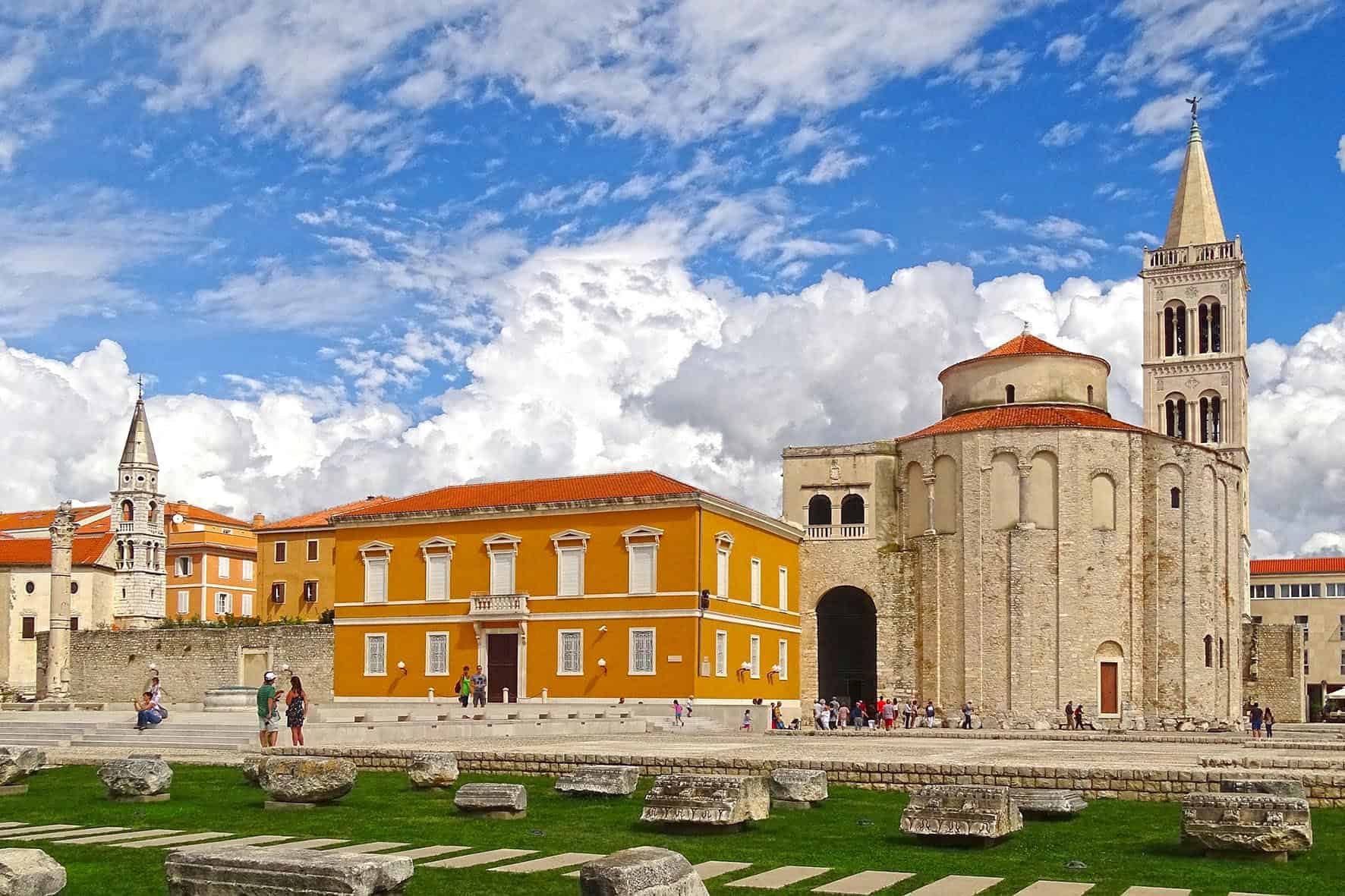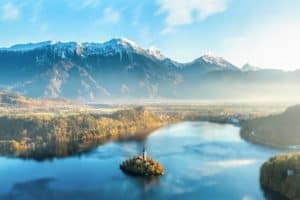This great tour is truly the very best of Croatia. Our magnificent country full of diversities will astonish you with its natural beauties, rich history, hospitality and local cuisine. Be an actor of Croatia and the Best of It and you will find out why everyone just adore this tour and of course, Croatia.
Duration: 8 days / 7 nights
Day 1 – arrival to ZAGREB
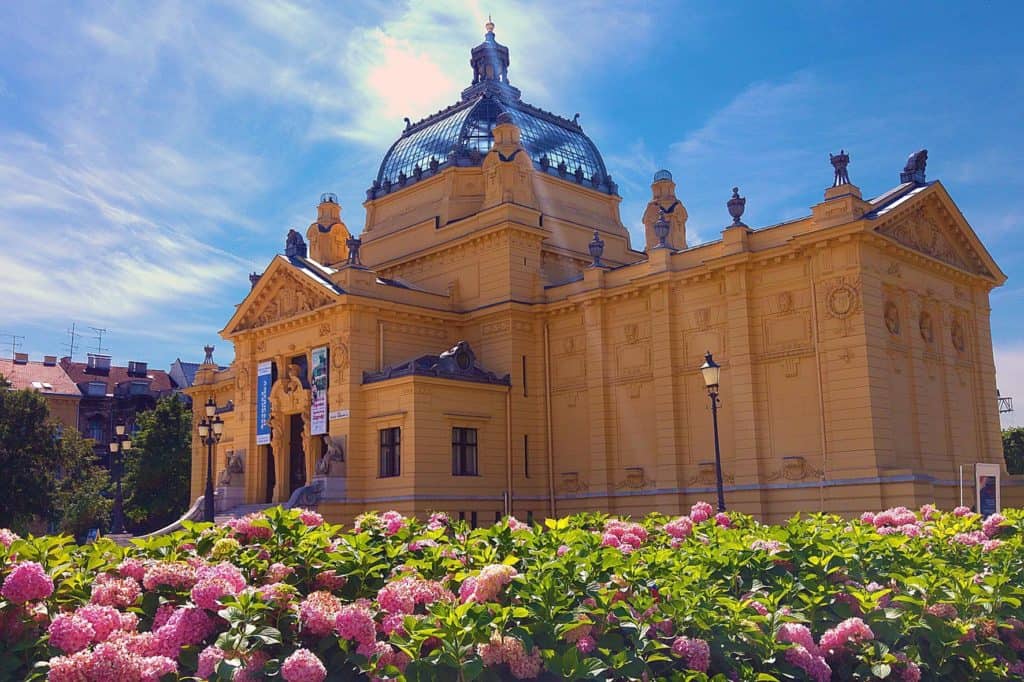
On your first day of this great tour, you will meet Zagreb, capital of Croatia and its biggest city. We will wait for you at the airport and transfer you to the hotel, located in the city center, where you will check in.
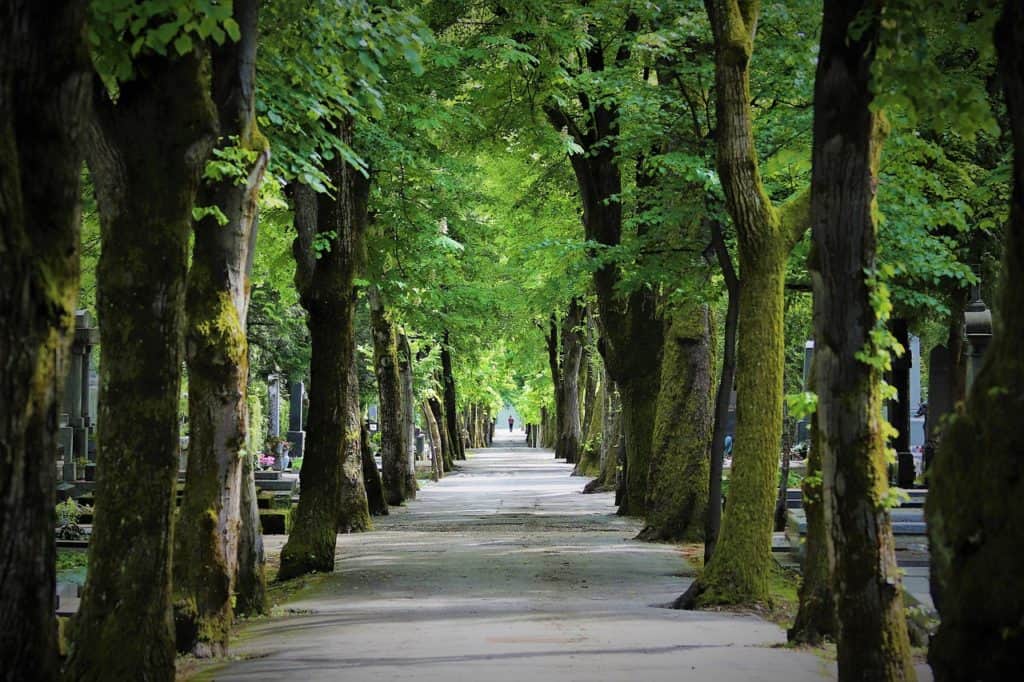
After check in we will take you for a walk through the city center, so you can discover your first experience with this exceptional old city; Zagreb – two cities in one city; two different faces in one face. Majestic Upper town, which is intimate, cozy and distinctly medieval in ambience and the Lower town, full of huge squares, wide boulevards and Secession architecture.
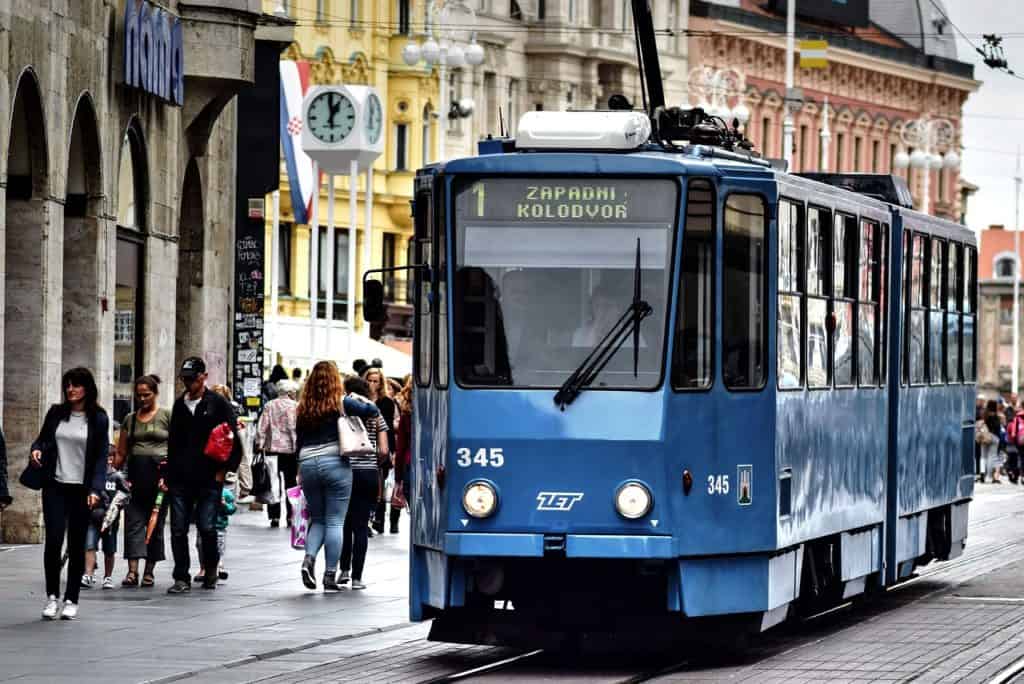
You will see central square of Josip Jelacic, Zagreb Cathedral, the most beautiful market at the open – Dolac, Stone Gate and many other attractions. We’ll take a ride with the shortest funicular in the world (only 66 meters) to the Upper town and enjoy amazing view on Zagreb roof tops. We’ll take you through the beautiful Lenuzzi horseshoe or so called Green horseshoe, a complex of 7 parks and squares with fountains, in the center of the town. In the evening, we are inviting you to be our guests at a Welcome dinner in one of Zagreb restaurants where you will taste local delicacies.
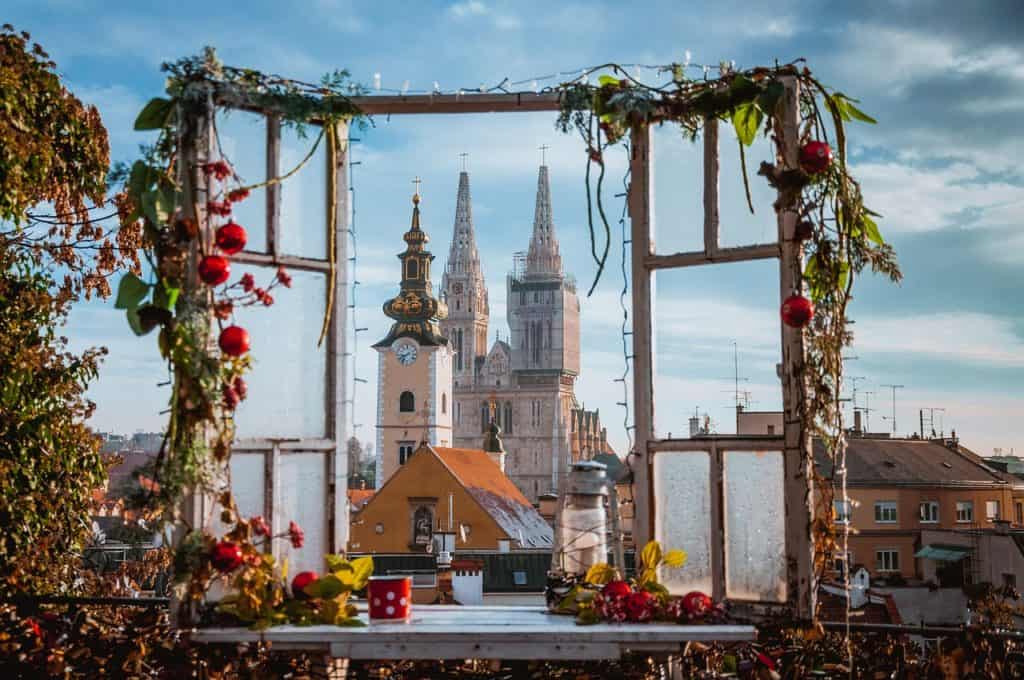
Overnight in Zagreb, 4* or 5* hotel in the city center
Day 2 – ZAGREB – ETNO VILLAGE KUMROVEC – TRAKOŠĆAN CASTLE – KRAPINA NEANDERTHAL MUSEUM – ZAGREB
On the second day of the tour, after breakfast, we are going towards north of Croatia, part called Croatian Zagorje, picturesque region with many hills, vineyards and charming villages.
We will visit first Etno Village Kumrovec, which makes important segment of Croatian and ex-Yugoslavian history. It is a unique outdoor museum with preserved original village houses from the turn of the 19th and 20th centuries. The history of the Old Village began by the mounting of the monument in front of the birth house of Josip Broz Tito in 1948. The place where the former president of Yugoslavia, a war hero and one of the most popular leaders on the global political scene in the second half of the 20th century. You will see the permanent ethnological collections of the traditional lifestyle from the late 19th century, such as: Zagorje Wedding, The Life of a Young Married Couple, From Hemp to Canvass, The Blacksmith’s Trade, Wagon-Maker’s Trade, Pottery, From Grain to Bread…
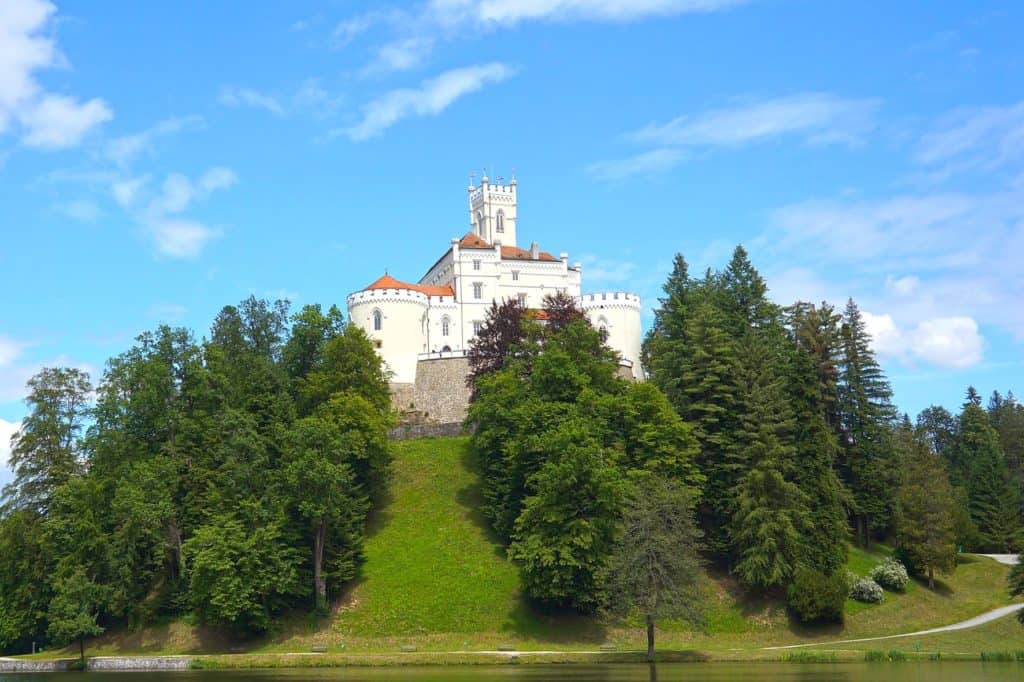
After the old lifestyle experience, we are going to see the most beautiful and preserved castles in Europe – Trakošćan castle. Trakošćan is true fairy-tale castle, where you can still feel a whiff of mysterious medieval times and hear legends and myths which have been told so many times, but always interesting and attractive. With tour through the castle you can relive the life of their former inhabitants. It is known for its owners the family Draskovic, who besides Zrinski, was one of the most popular Croatian noble families from the feudal era. Beautifully situated on a hill with a garden in the midst of Park Forest, Trakošćan is amongst the highest category monuments of culture and nature. Take a tour through knights’ room, the hunting room, music salon, specimens of firearms dating from the 13th to the 19th centuries. Walk through the most beautifully formed parks in Croatia with rich vegetation and fascinating view. Moreover, a beautiful romantic gardens, built on the model of English parks, and a large lake in front of the castle is something that should not be missed.
Before getting back to Zagreb, we will see another magical attraction – Krapina Neanderthal Museum. Museum covers a surface area of around 1,200 m² and is one of the most modern museums in Croatia and central Europe. Krapina is a famous location of the European prehistoric period, and next to the prehistoric habitat of the Krapina Neanderthal there is now a new European museum with multimedia contents that will take you back to the age of the Neanderthal and to the beginning of the origins of our species. Who were those people that lived between 30,000 and 300,000 years ago? How did 19th century science discover them and interpret what they found? What do we know now, at the turn of the third millennium, about these Stone Age people who used to hunt for rhinoceros in this area 125,000 years ago? Where does the Neanderthal belong on the Tree of Life? You will all find it out in Krapina Neanderthal Museum!
We will arrive to Zagreb in the evening.
Overnight in Zagreb, 4* or 5* hotel in the city center
Day 3 – ZAGREB – RASTOKE – PLITVICE LAKES – ZADAR
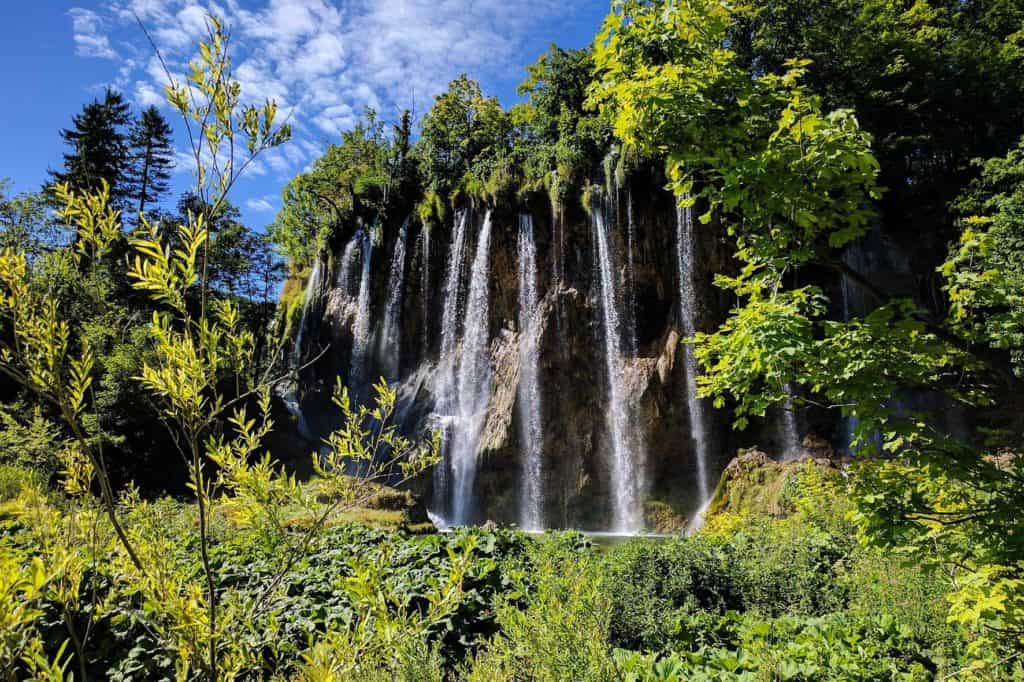
After breakfast, we are heading to the south, almost facing magnificent Adriatic coast. But before that, we will stop in a little charming millers village Rastoke, situated about 100 km from Zagreb, where the river Slunjcica over travertine rocks flows into river Korana, while through Rastoke creating many small lakes, rapids and waterfalls.
Rastoke is often called the lobby of Plitvice Lakes and therefore is often called small Plitvice Lakes. In Rastoke we will see the old water mills, traditional wooden houses and lovely nature. River Slunjcica is abundant with wild trout which you can try in the local restaurants, freshly caught and prepared in many different ways.
Village Rastoke is true hidden paradise and a great overture to the majestic Plitvice Lakes. Plitvice Lakes are a world pearl of incalculable value. Its specific beauty is a sanctuary for nature lovers and an inspiration for artists, whereas the uniqueness and richness of its nature is an occupation of scientists.
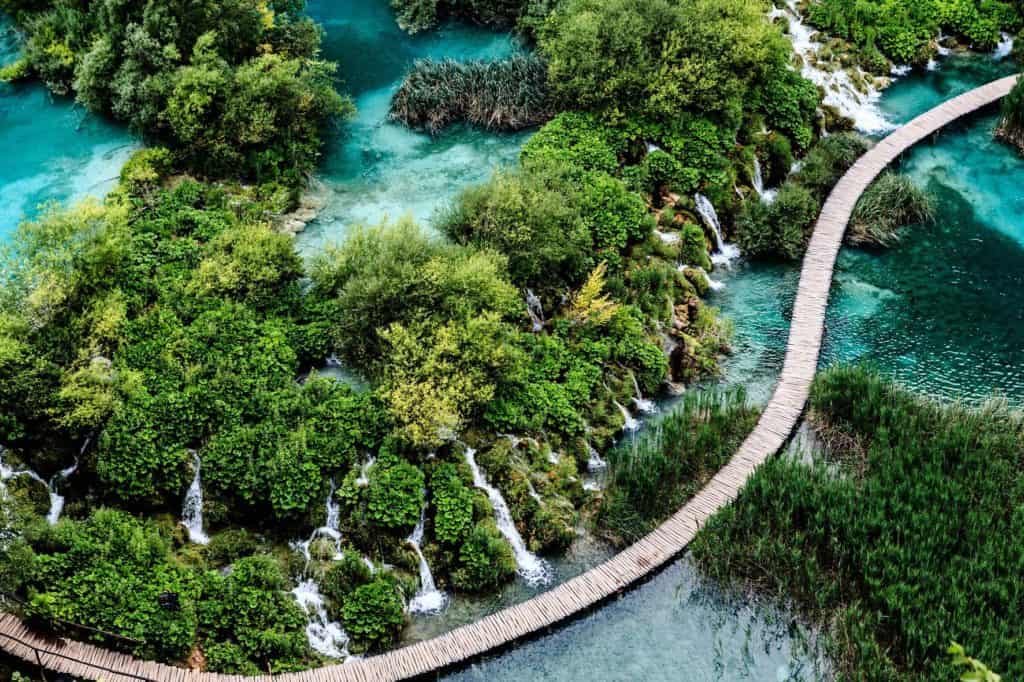
This pure emerald beauty has deserved to be placed on the UNESCO World Heritage List since 1979, as the oldest Croatian National Park (proclaimed in 1949). Today, 60 years after its establishment, Plitvice Park continues to provide inspiration for visitors becoming nowadays one of Croatia’s biggest attractions. Thousands of people from all over the world visit the Park during all year round. They come to find peace and relaxation just to experience something different as a getaway from the city.
The series of 16 bigger and a few smaller lakes, gradually lined up, separated by travertine barriers for which the period of the last ten thousand years was crucial, and which were ruled by ecological relations similar to those of today – suitable for travertine depositing and for the origin of the lakes – are the basic phenomenon of the National Park.
Enjoy the timeless beauty of an impressive 78 meters High waterfall, take a walk through green oasis or take a ride with a train or an electric boat, while breathing fresh air and discovering pure intact nature…
In the evening we are coming to stunning old city Zadar, where history tells stories about it.
Zadar is a city monument, surrounded by historical ramparts, a treasury of the archaeological and monumental riches of ancient Roman and medieval times, Renaissance and many contemporary architectural achievements such as the first sea organs in the world. It is three thousand years old, a city of old and dynamic history, often destructed, devastated, every time emerging from the ruins stronger, richer and more beautiful. Zadar has remains dating from the early Stone Age, while from the Neolithic it has remains of many human settlements. In Zadar we will see the Church of St. Donat, a city symbol from the early middle ages, Kalelarga, Cathedral of St. Anastasia and city walls from Roman times and middle ages.
Before going to sleep, we are going to take you to experience the most beautiful sunset in the world.
Overnight in Zadar, boutique 4* hotel in the Old town
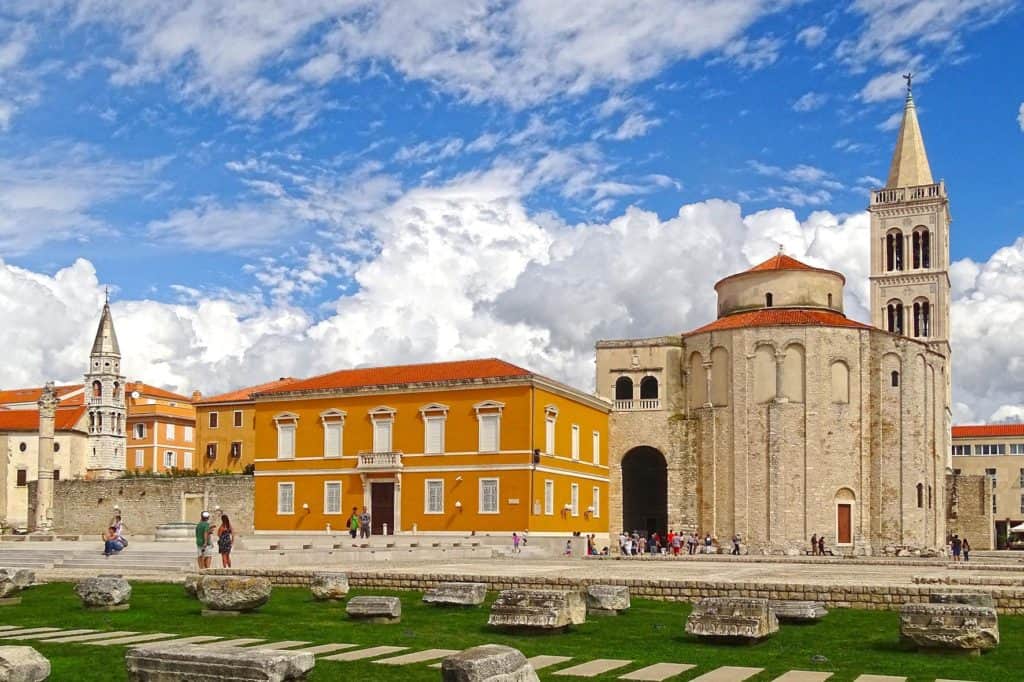
Day 4 – ZADAR – ŠIBENIK – TROGIR – SPLIT
After enjoying Zadar beauties we are going more to the south, following crystal clear Adriatic sea. Discover Šibenik and its old cobble-stone streets. Šibenik is the oldest Croatian town on the Adriatic coast. It is also called Krešimir’s town, since it was the residence of King Petar Krešimir IV, the most important ruler of the ancient Croatian state. Šibenik is located in a large bay where the Krka River meets the sea. It grew from an old Croatian fort near the fortress of St. Michael, which still overlooks the town. Apart from St. Michael’s, the town is surrounded by three other fortresses: St. Nicholas’, St.John’s and Šubićevac.
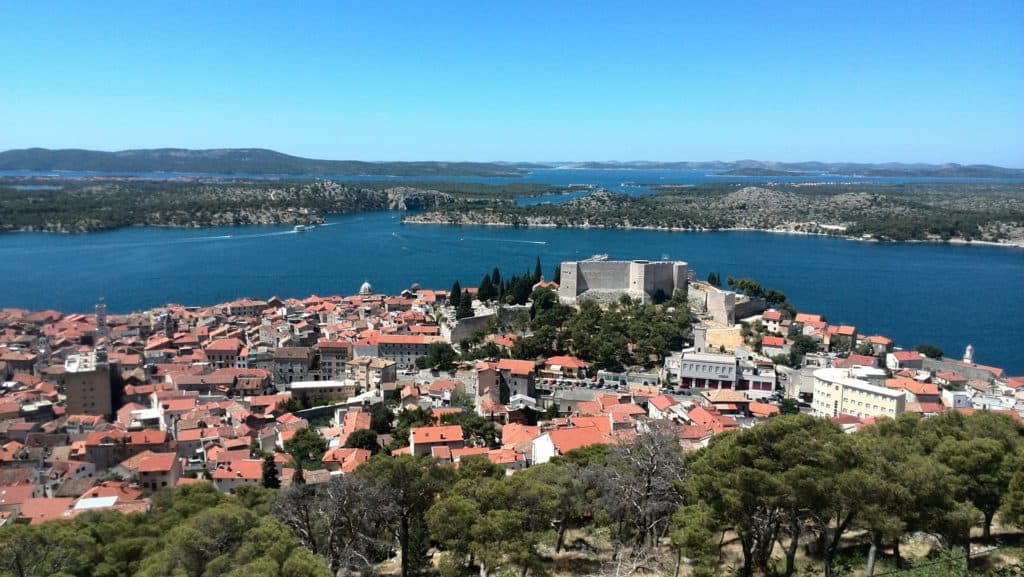
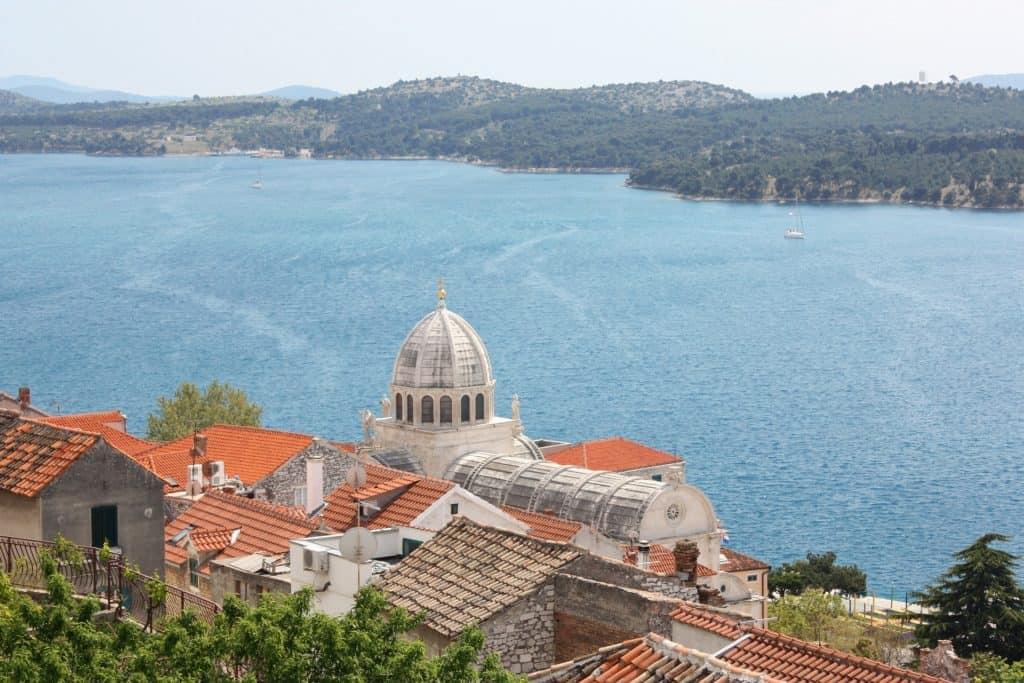
Its narrow winding streets, stony houses, many staircases and the remains of the city walls give Šibenik that romantic Mediterranean atmosphere. The St. James Cathedral is the most famous architectural master-piece in Šibenik, listed as the UNESCO World Cultural Monument. The building of the cathedral took over a hundred years. It was made according to sketches by Juraj Dalmatian, a renowned master builder from Zadar. Made of stone exclusively, its unique constructions were both bold and unusual for that time.
The cathedral is also known for its Apse, with a crown of 72 heads portraying the contemporaries of Juraj Dalmatian in a very realistic manner. The cathedral, the Renaissance town hall, the Prince’s castle, the neighboring churches and palaces – all are a part of an impressive square, probably the most beautiful one in the town-planning heritage of Croatia.
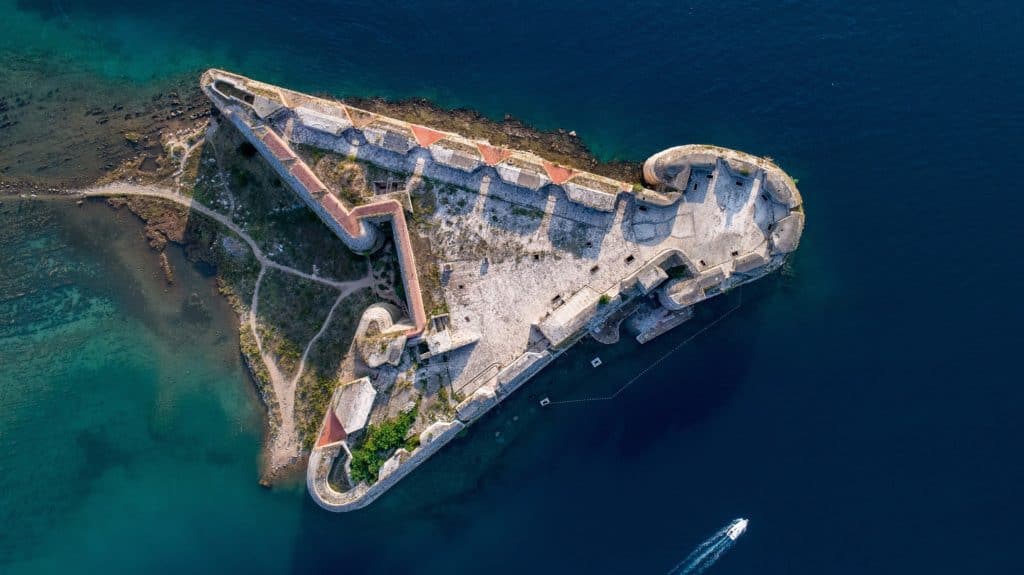
We are leaving this magnificent city-fortress and going to the mainland in an old rural domestic household, where we will enjoy in the local authentic home-made food.
After lunch, we will see one older Croatian jewel – small city Trogir. Trogir is an island with one of the biggest historical heritage in the world, abound in beauty and history and it’s protected by UNESCO. St. Lawrence Cathedral with its majestic portal of Radovan, priceless collection of the Chapel of St. Ivan Trogirski and gothic church bell makes the local people very proud. Most of the town walls, once used as a protection are preserved, forming, in the 13th century, the old center of Tragurium.
While walking through the narrow streets of the town you can come across Kairos, God of lucky moment… According to legend, whoever manages to grab his curl will have lucky moments of eternal beauty. In case you do not find it, this bronze relief and symbol of Trogir is the most valuable part of St. Nicholas monastery collection. Nowhere in the world you can find a town that magical at night time…
Stone walls become alive under the street lights, and Dalmatian songs are heard from every corner.
In the evening we are coming to Split.
Overnight in Split, design 4* hotel in The Old town
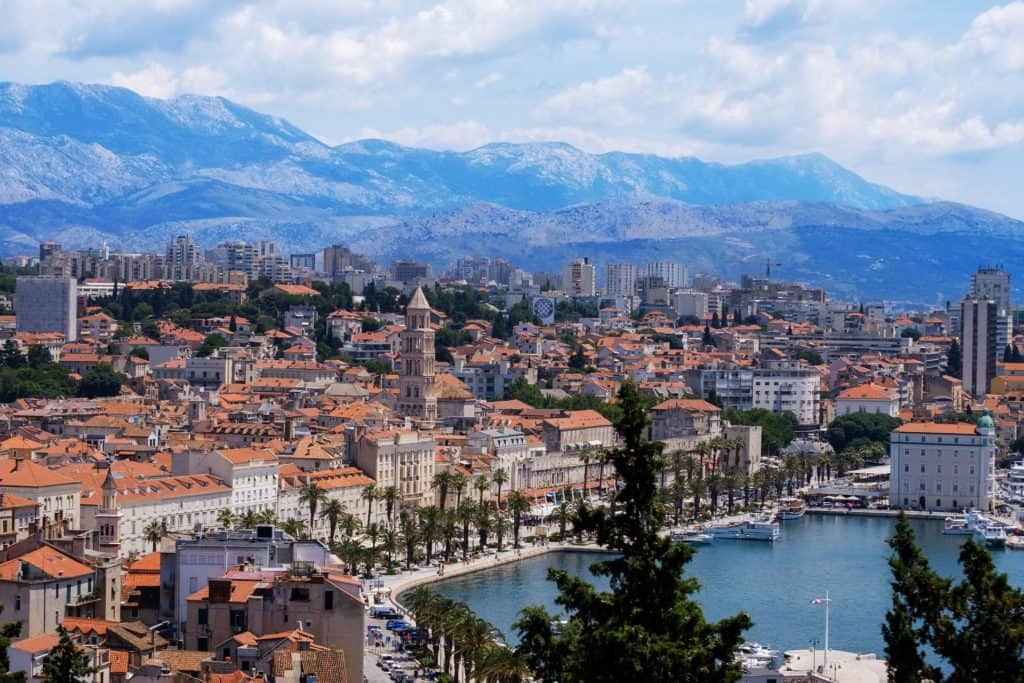
Day 5 – SPLIT
This whole days is aimed for exploring ancient city of Split, today cultural, economic and administrative center of Central Dalmatia. Because of its Mediterranean charm, vibrant and magical atmosphere, it’s often called ”The most beautiful city in the world”. Among its grandiose buildings, streets and walls, we will visit the most important monument of Roman architecture on the eastern coast of the Adriatic – The Diocletian’s Palace. The site was first settled when, at the end of the third century AD, the Roman Emperor Diocletian built his palace here. These days the palace is known as Diocletian’s Palace and it is under UNESCO’s protection. The importance of Diocletian’s Palace far transcends local significance because of its level of preservation and the buildings of succeeding historical periods built within its walls, which today formed the very heart of old Split. Numerous valuable cultural monuments are also to be found beyond the palace walls. Take your free afternoon for exploring this magnificent city – the pines of the Marjan forest in the western part of the peninsula, the murmur of the sea and the sound of the Dalmatian song in the stone streets of the city.
Once you get to know this town and the way of living here you are going to love it.
Overnight in Split, design 4* hotel in The Old town
Day 6 – SPLIT – PELJEŠAC PENINSULA – STON – DUBROVNIK
On our way till the extreme south and city of Dubrovnik, we will drive across Pelješac peninsula, where you will enjoy its green scenery and beautiful surroundings. This region is famous by the best Croatian wines and wine producing in general, as well as you will enjoy in extraordinary tastes of local cuisine, specially sea-food.
We will stop in a Ston bay, little fisherman village named Ston, well-known by its five-kilometers (3,5 miles) long walls, the longest in Europe, made as a fortification complex in 14th Century. After walking the walls, we will visit ancient salt factory (13.ct) where production still takes place under natural conditions on the same principles it has been running continuously for more than 7 centuries.
The gulf of Mali Ston has a clean and natural environment. It has been well-known for its mussel and oysters-growing farm since Roman times and the oysters from Ston (ostrea edulis), as an acknowledged natural aphrodisiac has made this region world-famous. You will have a chance to taste these sea-delicacies.
In the evening we are coming to Dubrovnik.
Overnight in Dubrovnik, 5* hotel
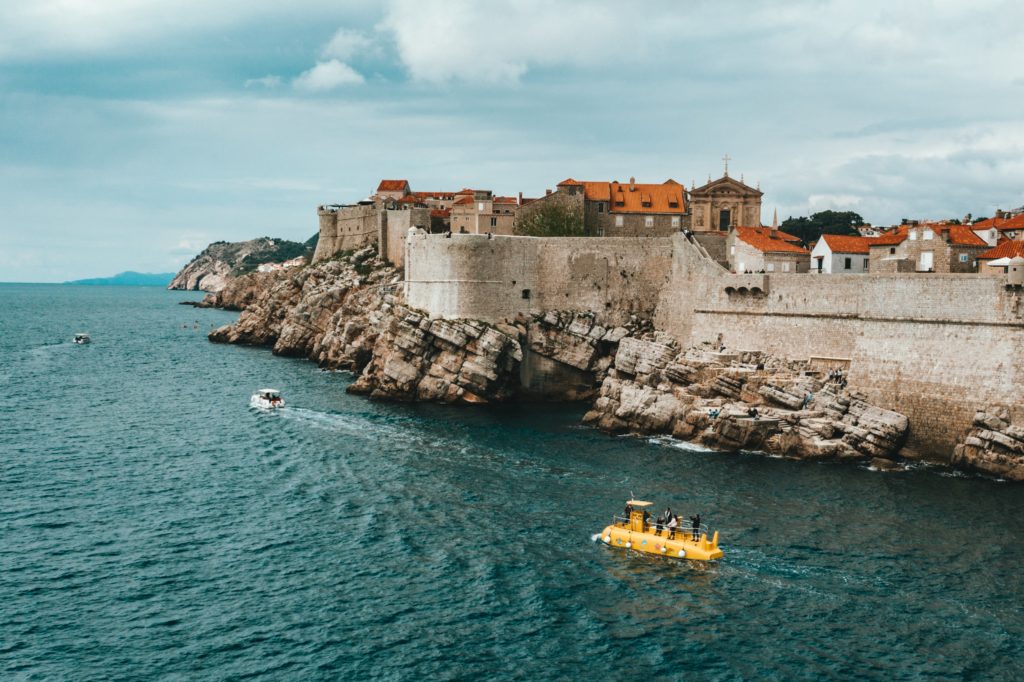
Day 7 – DUBROVNIK
And finally, welcome to Dubrovnik – The Pearl of the Adriatic. Great George Bernard Shaw, impressed by its magic, once said – “Those who seek paradise on Earth, should come to Dubrovnik and find it”. And he was absolutely right. Dubrovnik’s nickname is a “Pearl of the Adriatic” and is listed as a UNESCO world heritage site since 1979. Today Dubrovnik is the proudest feather in Croatia’s tourist cap, an elite destination and one of the most beautiful towns in the Mediterranean. Dubrovnik used to be an independent republic, surviving mostly on trade. It managed to survive many centuries, with constant threats to its territory, particularly from the mighty Ottoman Empire and Venice. History is present in the entire city, which is both a museum and a picturesque stage where cultural heritage and contemporary life meet. All houses and monuments have a unique value. The Old City is encompassed by medieval walls, which have been preserved in their original form and opened for visitors as Dubrovnik’s major attraction.
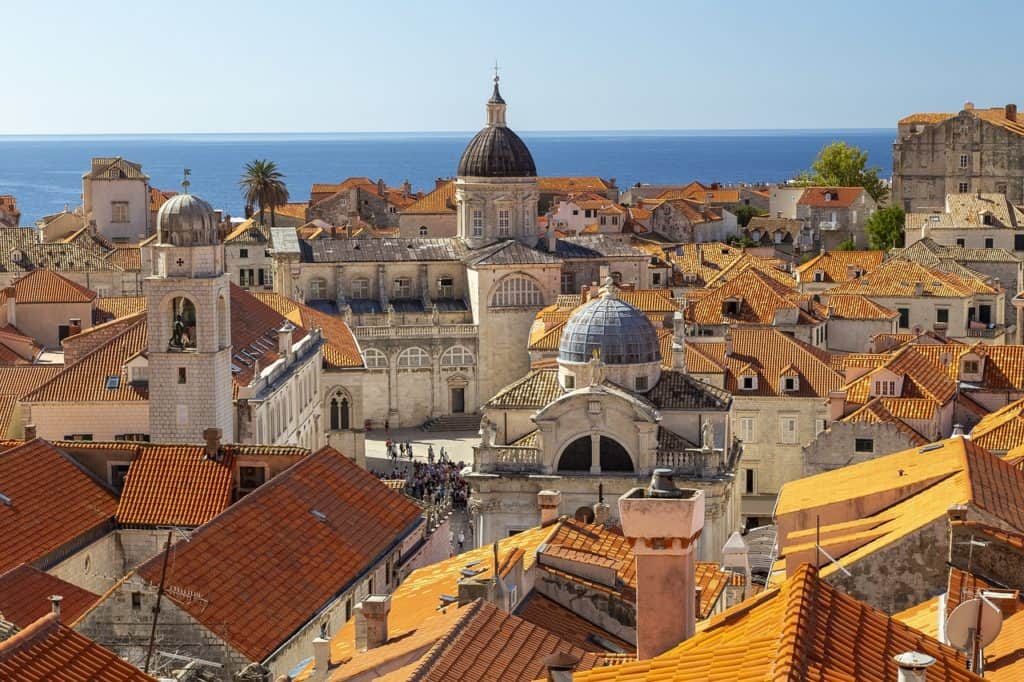
We will enter the old town through the Pile Gate and we will find ourselves on Stradun – biggest street in Dubrovnik. Here we will find the Onofrio Fountain, built in 1438, the Franciscan Monastery, with one of the oldest functioning pharmacies in Europe, in operation since 1391. At the other end of the Stradun, we will discover the locals’ favorite meeting place, the Orlando Column, with the nearby Sponza Palace and the baroque church of St. Blaise. Here is also the Rector’s Palace, which is now a city museum packed with valuable and historic exhibits. Opposite the palace through a narrow street is a square, Gunduliceva Poljana, which is the site of the busy morning market. In the same square is the Jesuit Monastery from the early 18th century. From here you can see the little old town port and visit the city walls which encircle the city and which have been remarkably preserved.
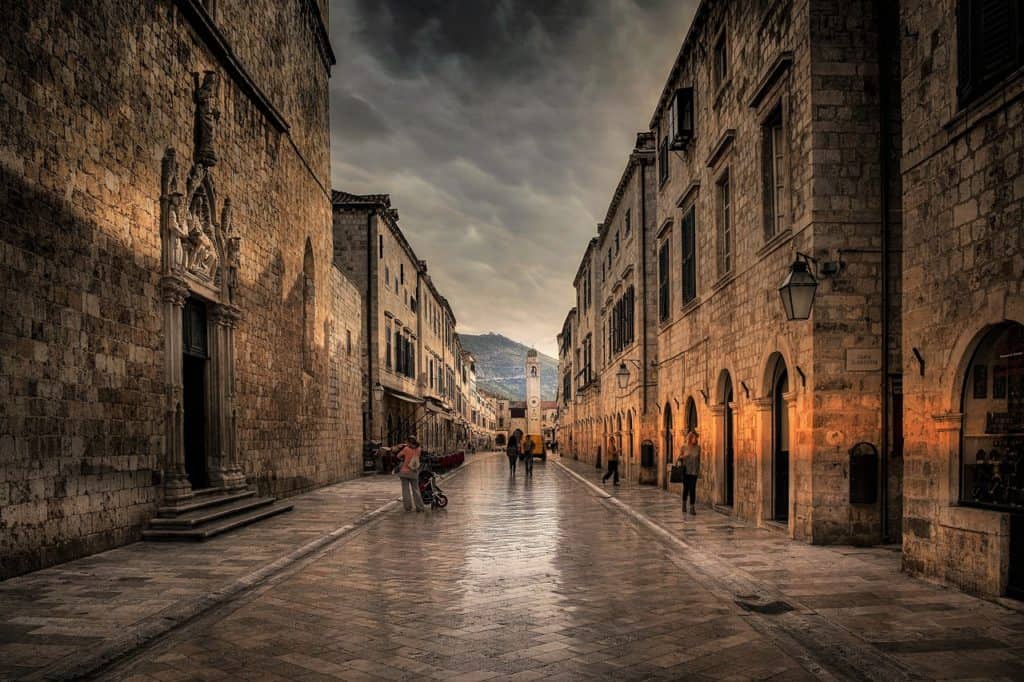
Whole city is alive monument and rich treasury of history. You will surely find it magical.
Take your free afternoon and evening for more exploring Croatian pearl.
Overnight in Dubrovnik, 5* hotel
Day 8 – departure from DUBROVNIK
Our amazing journey throughout Croatia has come to the end. We will drive you to Dubrovnik Airport to catch your returning flight. We wish you a safe journey home, together with your memories collected in our small, but so diverse country. Till some next time, CroStory team says good-bye…
Please note: Prices are not fixed, they are flexible depending on a season period and hotel rates. Therefore we suggest you to send us a request so we could make for you a final offer. The travel arrangement can always be customized to your specific preferences. For more details, please send your request to info@crostory.com

